Tourist places around Kiev
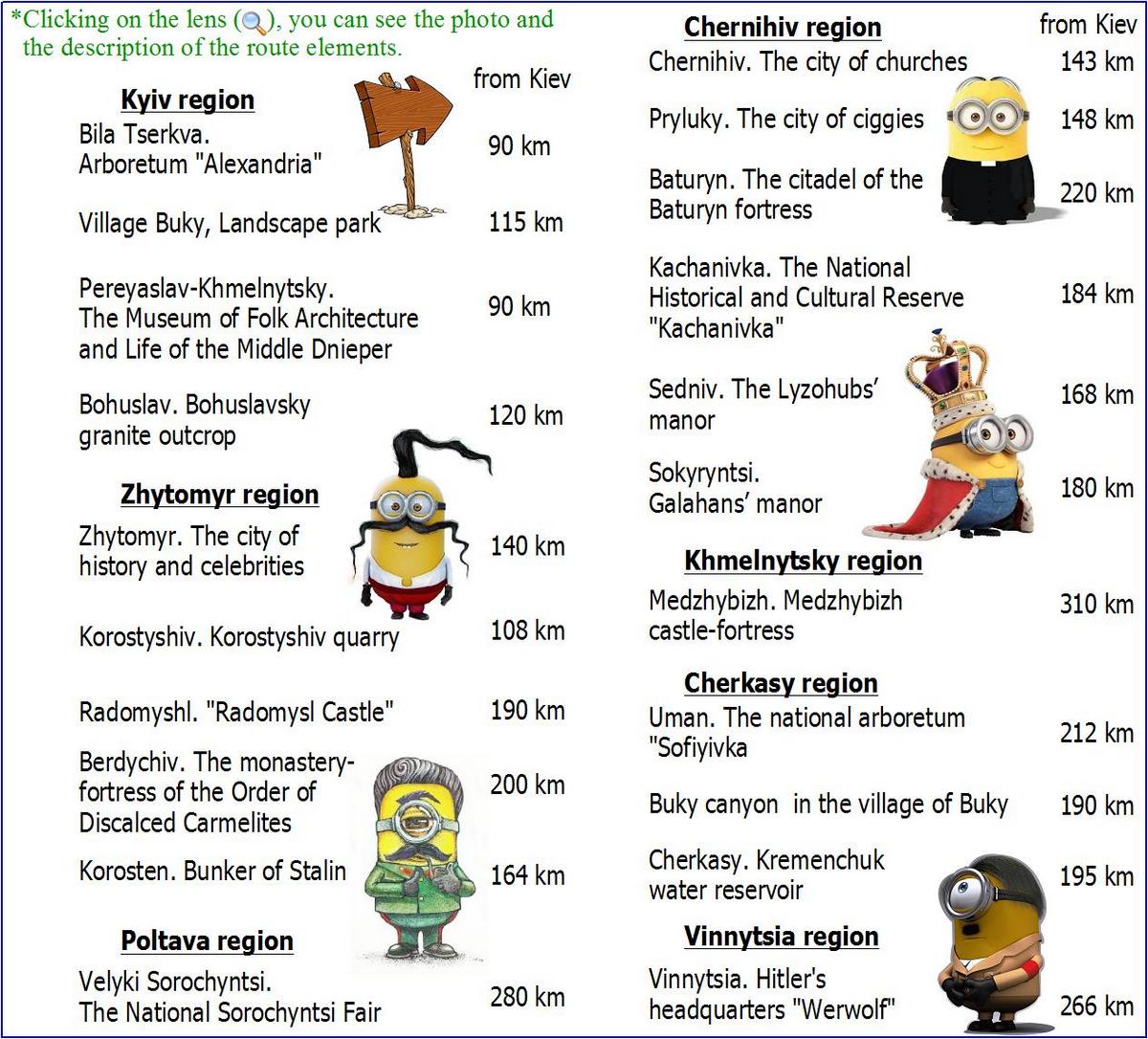
We organize tours to the most popular tourist places of Ukraine, located near Kyiv. Join our one- or two-day trip to the sights of Kyiv, Vinnytsia, Zhytomyr, Poltava, Cherkasy, and Chernihiv regions. Below, by clicking on the pictures by region, you can read about the region and choose your destination. Call us if you make up your mind – and we will make your trip fascinating and comfortable.
TOURIST PLACES AROUND REGIONS OF UKRAINE
Map of places around Kiev
Sights around Kyiv include many nature reserves, open-air parks, as well as interesting objects created not only by humans, but also by nature. These attractions are located within 150-200 km from Kyiv, which enables visiting any of the places marked by real travelers in just one day.
In warm season, tourists especially often visit parks and reserves, such as the arboretum “Alexandria” (Bila Tserkva), founded in the XVIII century, Landscape Park in the village of Buky, as well as the National Dendrological Park “Sofiivka”, located in Uman.
Sofiivka, a 180-hectares park, founded in 1796, is now known throughout the world. It is annually visited by over 500 thousand people. Here various trees and bushes grow, ponds and waterfalls are created, and the territory itself is decorated with sculptures. It is worth noting that Uman is known not only as the landscape art of the XVIII century. To celebrate the Jewish New Year, thousands of Hasidic pilgrims come to the grave of Rabbi Nachman, who was buried in Uman.
Special attention should be paid to the unique phenomena of nature that have survived to our days. For example, 120 km from Kyiv, there is the Boguslavsky granite canyon of up to 12 m high rocks. A canyon formed of red and gray granite is considered a place of power with positive energy. The Buk canyon on the river Hornyi Tykych is another place that attracts tourists with its picturesque nature The landscape of this area fascinates with its view, and the rocky canyon has long been called the Norwegian fjords. The Canyon also attracts fans of outdoor activities (rafting, kayaks, rock climbing).
To feel the history, we advise you to go on an excursion to Chernihiv – a city of churches and one of the oldest cities in Ukraine. In the period of Kievan Rus, it was the second largest city after Kyiv. The main attractions of Chernihiv are cathedrals, monasteries and cave vhurches. Every year, pilgrims from all over the Orthodox world arrive to local shrines.
If you want to experience national authenticity, learn about the culture and life of our people, then make sure you visit Pereyaslav. It’s a small town with 27 museums. First of all an open-air museum should be mentioned. Here you can see the dwellings, tools and household items of Ukrainian steppe villages from the times of Kievan Rus. Pereyaslav has an ancient history. T. Shevchenko, G. Skovoroda, Sholom Aleichem used to live here for some time.
We named the most popular sights around Kiev. This is not the end of the list though. Not far from Kiev there are such cities as Berdychiv, Radomyshl, Korosten, Vinnytsia and Cherkasy. Each of them has something of its own; something special and unique that attracts tourists from different countries.
Traveling in Ukraine, you will see the treasures of our country and learn a lot of new things. We will do our best to organize for you a fascinating excursion. We aim to surprise!





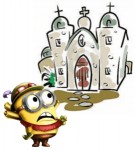



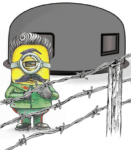

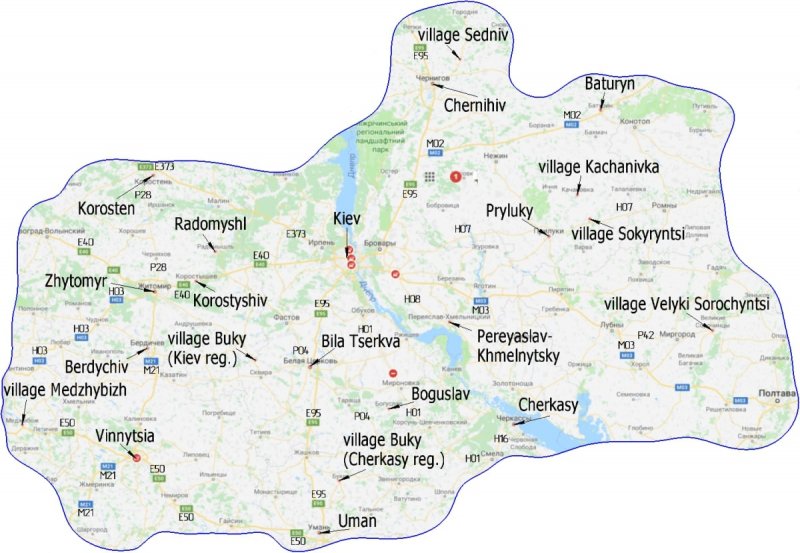

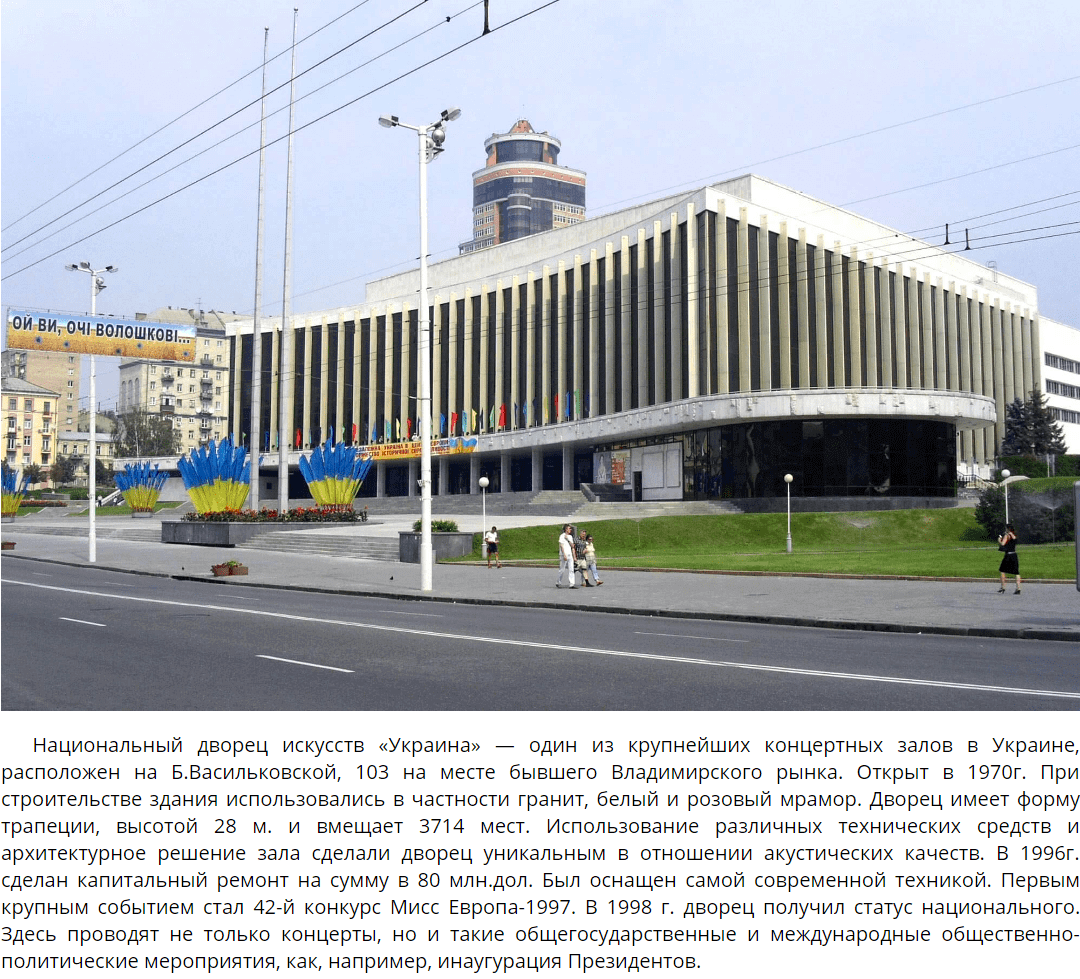
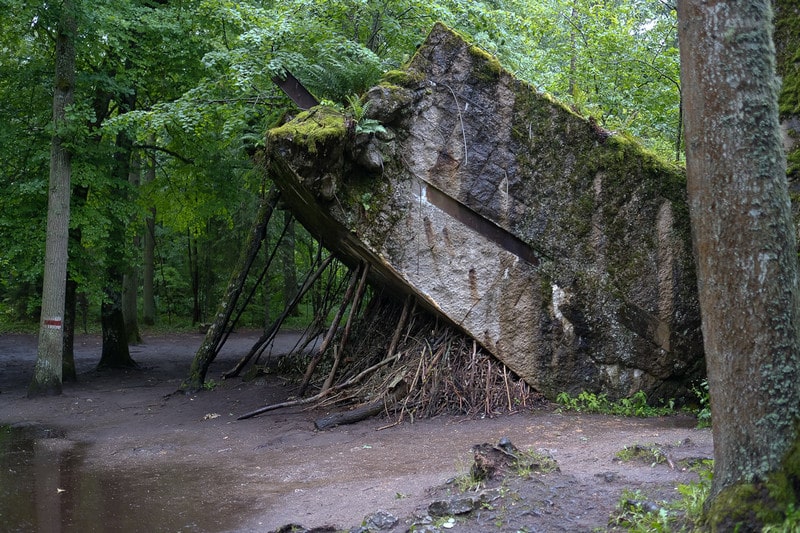
 Cherkasy. Kremenchuk water reservoir – is a city of regional and industrial importance, located on the right bank of the Kremenchuk reservoir (195 km from Kyiv), is a regional centre. Today it is also the cultural centre of the region. The uniqueness of the city is its location on the hills along the Dnipro river. Cherkasy are at the foot of the Dnipro, which here is not only wide, but very wide – the distance between the banks reaches up to 13 km.
Cherkasy. Kremenchuk water reservoir – is a city of regional and industrial importance, located on the right bank of the Kremenchuk reservoir (195 km from Kyiv), is a regional centre. Today it is also the cultural centre of the region. The uniqueness of the city is its location on the hills along the Dnipro river. Cherkasy are at the foot of the Dnipro, which here is not only wide, but very wide – the distance between the banks reaches up to 13 km.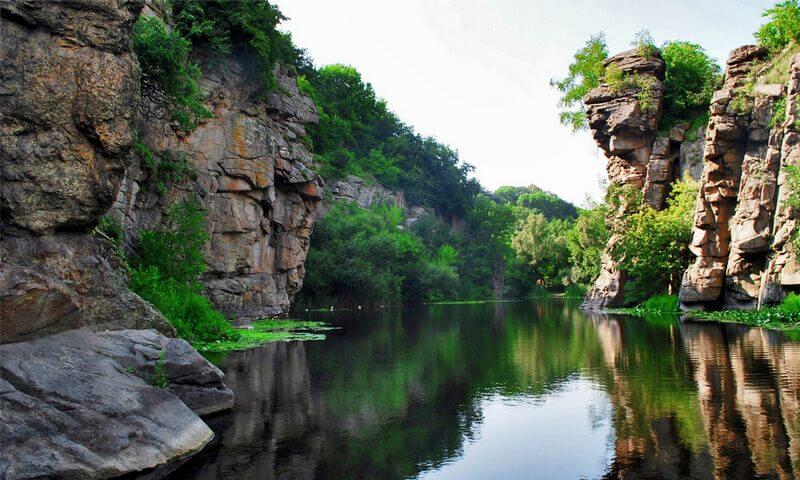 Buky canyon in the village of Buky- is a village in the Cherkassy region on the Gorny Tikich River (190 km from Kyiv). In recent years, this place is gaining popularity and alluring tourists with its picturesque nature. Its main beauty is the Buky canyon – a rocky canyon on the Gorny Tikich River near the village of Buky. The canyon itself is not large – its length is about 5 km.
Buky canyon in the village of Buky- is a village in the Cherkassy region on the Gorny Tikich River (190 km from Kyiv). In recent years, this place is gaining popularity and alluring tourists with its picturesque nature. Its main beauty is the Buky canyon – a rocky canyon on the Gorny Tikich River near the village of Buky. The canyon itself is not large – its length is about 5 km.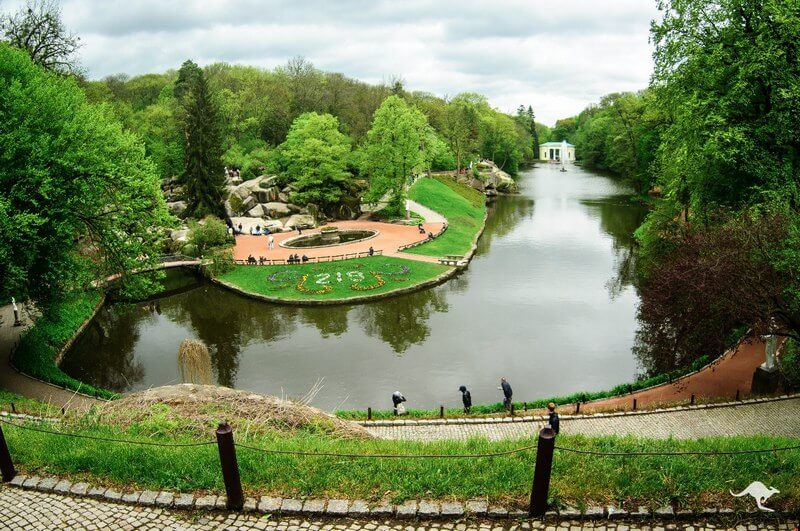 Uman. The national arboretum “Sofiyivka” is a city in the Cherkasy region (212 km from Kyiv), located at the confluence of the Kaminka and Umanka rivers, from where it takes its name. For the first time the city was mentioned in 1616 and territorially located on the border with Poland, undergoing constant raids and destruction. And only in 1726 begins the development of Uman, when this area passes into the possession of the Poles Francis Potocki.
Uman. The national arboretum “Sofiyivka” is a city in the Cherkasy region (212 km from Kyiv), located at the confluence of the Kaminka and Umanka rivers, from where it takes its name. For the first time the city was mentioned in 1616 and territorially located on the border with Poland, undergoing constant raids and destruction. And only in 1726 begins the development of Uman, when this area passes into the possession of the Poles Francis Potocki.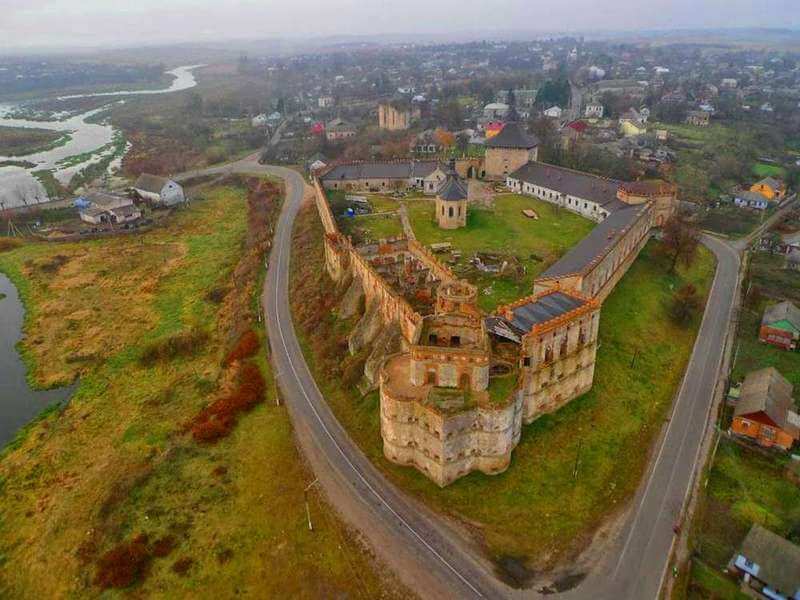 Medzhybizh. Medzhybizh castle-fortress is a settlement in Khmelnytsky region, located in 310 km from Kyiv. This ancient settlement (founded in 1146) is noteworthy in that it is the birthplace of the Hassidic movement (Judaism). The fact that the area has a long history is confirmed by the remains of the ancient settlement of the 11th-13th centuries that have survived to this day. Medzhybizh was a well-fortified frontier point, and built here in the XIV century castle did not dare to capture even the Crimean Khan. This once again confirms the importance and power of Medzhybizh.
Medzhybizh. Medzhybizh castle-fortress is a settlement in Khmelnytsky region, located in 310 km from Kyiv. This ancient settlement (founded in 1146) is noteworthy in that it is the birthplace of the Hassidic movement (Judaism). The fact that the area has a long history is confirmed by the remains of the ancient settlement of the 11th-13th centuries that have survived to this day. Medzhybizh was a well-fortified frontier point, and built here in the XIV century castle did not dare to capture even the Crimean Khan. This once again confirms the importance and power of Medzhybizh. Sokyryntsi. Galahans’ manor – is a small settlement in the Chernihiv region (180 km from Kyiv). Village remained inconspicuous until it passed at the beginning of the XVIII century in the property of a noble family – landlords Galahan, who have owned this estate for 150 years. Thanks to them, the village became famous. Creating its ancestral nest, the owners built a magnificent palace, as well as a wonderful park.
Sokyryntsi. Galahans’ manor – is a small settlement in the Chernihiv region (180 km from Kyiv). Village remained inconspicuous until it passed at the beginning of the XVIII century in the property of a noble family – landlords Galahan, who have owned this estate for 150 years. Thanks to them, the village became famous. Creating its ancestral nest, the owners built a magnificent palace, as well as a wonderful park. Sedniv. The Lyzohubs’ manor – is the urban type settlement of the Chernihiv region (168 km from Kyiv). Interest to this small village arose in the nineteenth century, when excavations were made here, as a result of which were found burial of the retinue with spears and arrows. In fact, the burial mound existed here in the 10th century, and the first mentions are found as a town-fortress called Snovsk. In 1068, not far from this place, Prince Svyatoslav Yaroslavovych with his regiment defeated the Polovtsi (Cumans) army.
Sedniv. The Lyzohubs’ manor – is the urban type settlement of the Chernihiv region (168 km from Kyiv). Interest to this small village arose in the nineteenth century, when excavations were made here, as a result of which were found burial of the retinue with spears and arrows. In fact, the burial mound existed here in the 10th century, and the first mentions are found as a town-fortress called Snovsk. In 1068, not far from this place, Prince Svyatoslav Yaroslavovych with his regiment defeated the Polovtsi (Cumans) army. Kachanivka. The National Historical and Cultural Reserve “Kachanivka” is a tiny village in the Chernihiv region, located in 184 km from Kyiv. This place was unremarkable and unknown until in 1771 the farm turned into the possession of count Petro Rumyantsev-Zadunaisky, who built a residence here and laid out the park. After the death of the count, the estate have replaced by not one master for 150 years, and each of them rebuilt something. So the owner G. Tarnovsky rebuilt the palace in the style of classicism, completing the second floor with a dome and ennobling the park.
Kachanivka. The National Historical and Cultural Reserve “Kachanivka” is a tiny village in the Chernihiv region, located in 184 km from Kyiv. This place was unremarkable and unknown until in 1771 the farm turned into the possession of count Petro Rumyantsev-Zadunaisky, who built a residence here and laid out the park. After the death of the count, the estate have replaced by not one master for 150 years, and each of them rebuilt something. So the owner G. Tarnovsky rebuilt the palace in the style of classicism, completing the second floor with a dome and ennobling the park.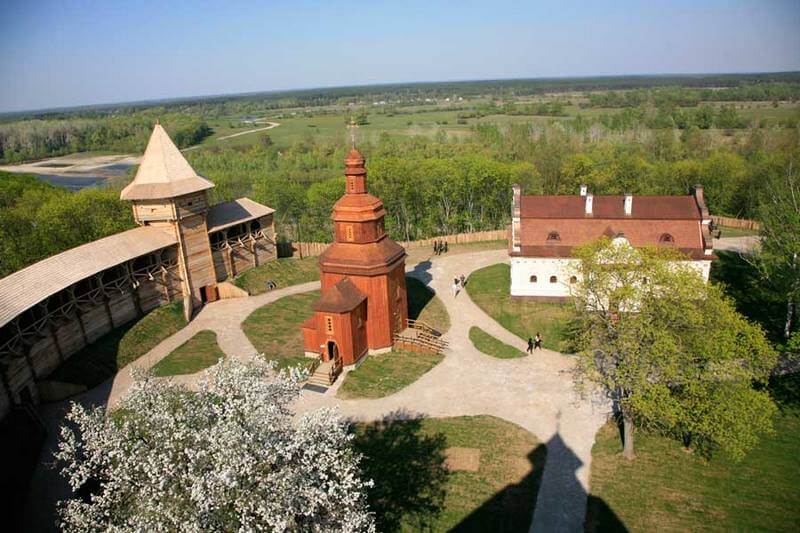 Baturyn. The citadel of the Baturyn fortress is a city in the Chernihiv region (220 km from Kyiv), founded in 1575 by the Polish king Stefan Bathory and named in his honour. At the beginning of the XVII century here, at the foot of the river Seim, a fortress was built, which later gave the origin of Baturyn’s story. Its importance was acquired by the city in 1669-1708, when it became the capital of the Cossack hetmanate, and the fortress – the hetman’s residence, in particular, of I. Mazepa, I. Samoilovych, D. Mnohohrishny.
Baturyn. The citadel of the Baturyn fortress is a city in the Chernihiv region (220 km from Kyiv), founded in 1575 by the Polish king Stefan Bathory and named in his honour. At the beginning of the XVII century here, at the foot of the river Seim, a fortress was built, which later gave the origin of Baturyn’s story. Its importance was acquired by the city in 1669-1708, when it became the capital of the Cossack hetmanate, and the fortress – the hetman’s residence, in particular, of I. Mazepa, I. Samoilovych, D. Mnohohrishny. Pryluky is a small town in the Chernihiv region, located on the Uday River (148 km from Kyiv). The city was first mentioned in 1085, where says about the fortress, which served as the protection of Kyivan Rus from the raids of nomads. In 1459, Pryluky was considered a large city and included in the Grand Duchy of Lithuania. Already in the XIX century the city was the parish centre of Pryluky county of Poltava province. Today on the territory of all Ukraine there are 12 cities, which bear the name “Pryluky”.
Pryluky is a small town in the Chernihiv region, located on the Uday River (148 km from Kyiv). The city was first mentioned in 1085, where says about the fortress, which served as the protection of Kyivan Rus from the raids of nomads. In 1459, Pryluky was considered a large city and included in the Grand Duchy of Lithuania. Already in the XIX century the city was the parish centre of Pryluky county of Poltava province. Today on the territory of all Ukraine there are 12 cities, which bear the name “Pryluky”.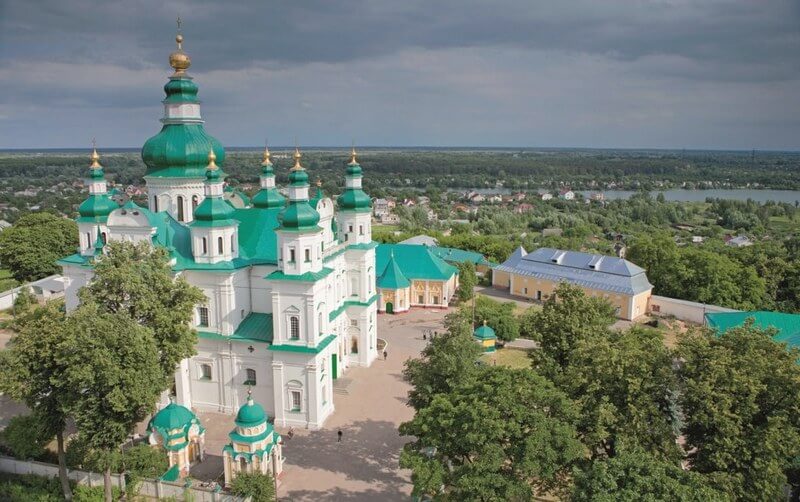 Chernihiv. The city of churches is one of the most ancient cities of Ukraine, located in 143 km from the capital, today it is a regional city. It was first mentioned in 907 in the “Tale of Bygone Years” as the second major city in Kyiv Rus after Kyiv. The city with rich centuries-old history has left to the present day a lot of sights and ancient shrines, wherewith annually draws to itself not only tourists, but also pilgrims from all over the Orthodox world. T
Chernihiv. The city of churches is one of the most ancient cities of Ukraine, located in 143 km from the capital, today it is a regional city. It was first mentioned in 907 in the “Tale of Bygone Years” as the second major city in Kyiv Rus after Kyiv. The city with rich centuries-old history has left to the present day a lot of sights and ancient shrines, wherewith annually draws to itself not only tourists, but also pilgrims from all over the Orthodox world. T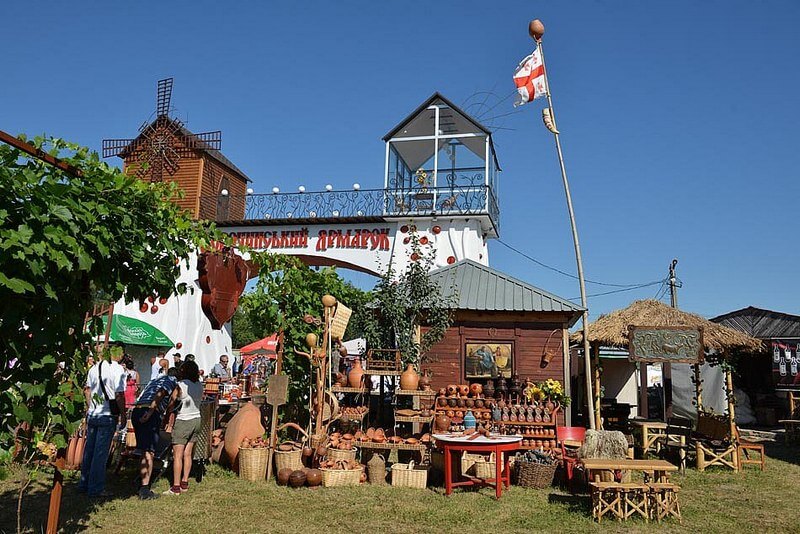 Velyki Sorochyntsi. The National Sorochyntsi Fair – is a small village in the Poltava region (280 km from Kyiv), known throughout the world with the National Sorochyntsi Fair, which since the middle of the 19th century is held annually. But not only the fair became famous this place. It was here that the outstanding writer Mykola Gogol was born, who immortalized the village by writing the work “Sorochyntsi Fair”. Today, here is the literary-memorial museum of M. Gogol, in front of which there is a bronze bust of the writer.
Velyki Sorochyntsi. The National Sorochyntsi Fair – is a small village in the Poltava region (280 km from Kyiv), known throughout the world with the National Sorochyntsi Fair, which since the middle of the 19th century is held annually. But not only the fair became famous this place. It was here that the outstanding writer Mykola Gogol was born, who immortalized the village by writing the work “Sorochyntsi Fair”. Today, here is the literary-memorial museum of M. Gogol, in front of which there is a bronze bust of the writer. Korosten. Ostrovsky Central Park is one of the most ancient cities, located on the Uzh River in the Zhytomyr region (164 km from Kyiv). The first mention of the city as the centre of the Slavic tribe – Drevlyans is found in “The Tale of Bygone Years” (945) and was then called Iskorosten (“from the bark-wall”). T
Korosten. Ostrovsky Central Park is one of the most ancient cities, located on the Uzh River in the Zhytomyr region (164 km from Kyiv). The first mention of the city as the centre of the Slavic tribe – Drevlyans is found in “The Tale of Bygone Years” (945) and was then called Iskorosten (“from the bark-wall”). T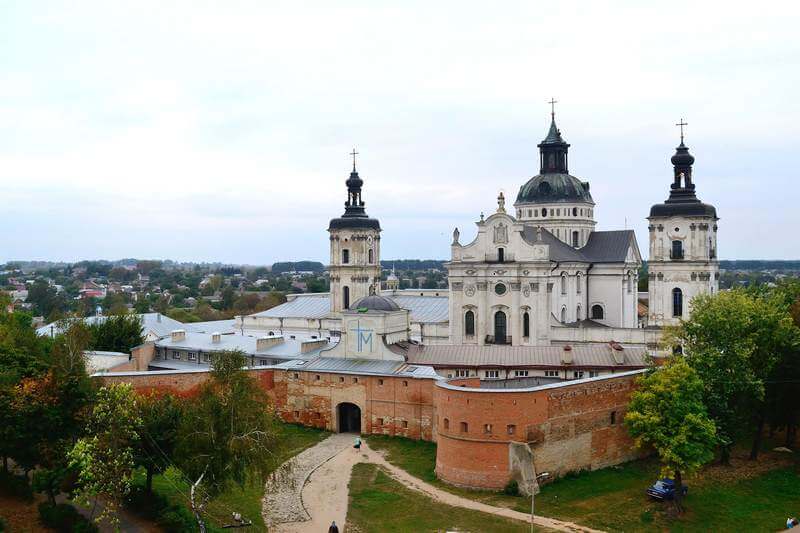 Berdychiv. The monastery-fortress of the Order of Discalced Carmelites is a small town in the Zhytomyr region (200 km from Kyiv), whose history dates back to 1320. Berdychiv is not very popular with tourists, but it is known among believers. Annually hundreds of pilgrims from all over Ukraine come here.
Berdychiv. The monastery-fortress of the Order of Discalced Carmelites is a small town in the Zhytomyr region (200 km from Kyiv), whose history dates back to 1320. Berdychiv is not very popular with tourists, but it is known among believers. Annually hundreds of pilgrims from all over Ukraine come here.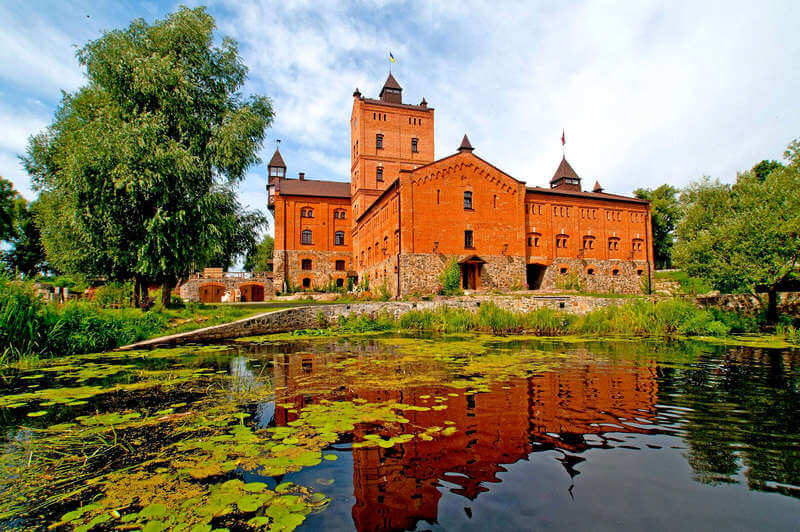 Radomyshl. “Radomysl Castle” is a small town in the Zhytomyr region (190 km from Kyiv). Interest to this town arose among tourists recently, when here in 2011 the private museum complex “Radomysl Castle” was opened, the founder of which was Ukrainian physician and doctor of medicine Olga Bogomolets. The main building of the complex is the castle itself – it is an old-time mill, built in 1902 and restored with the reconstruction of the interior of the XVII-XIX centuries.
Radomyshl. “Radomysl Castle” is a small town in the Zhytomyr region (190 km from Kyiv). Interest to this town arose among tourists recently, when here in 2011 the private museum complex “Radomysl Castle” was opened, the founder of which was Ukrainian physician and doctor of medicine Olga Bogomolets. The main building of the complex is the castle itself – it is an old-time mill, built in 1902 and restored with the reconstruction of the interior of the XVII-XIX centuries.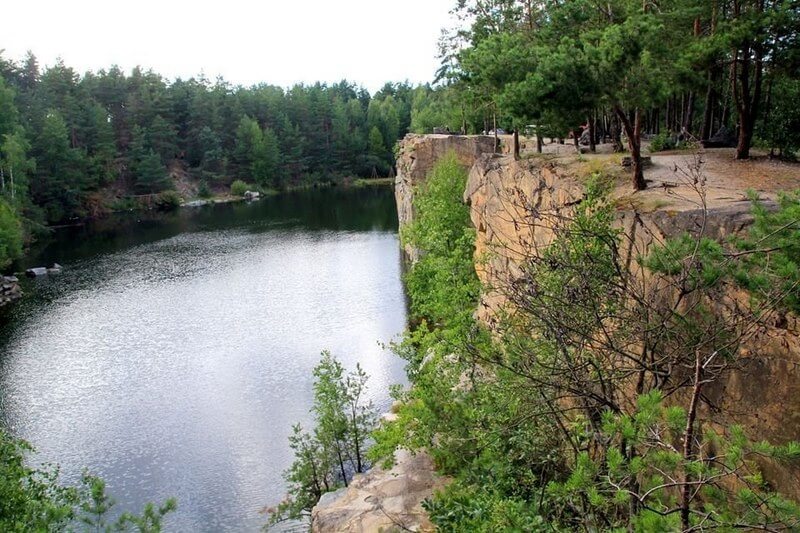 Korostyshiv. Korostyshiv quarry is a picturesque town on granites in the Zhytomyr region (108 km from Kyiv), which dates back to the 13th century. The first mention of the settlement occurs only in 1499, when the Lithuanian prince Jagellon presented him to the boyar Krzysztof Kmit. Since 1565, the village was owned by the kind of counts Olizarov. In the XVII century in the city a castle and a church were built.
Korostyshiv. Korostyshiv quarry is a picturesque town on granites in the Zhytomyr region (108 km from Kyiv), which dates back to the 13th century. The first mention of the settlement occurs only in 1499, when the Lithuanian prince Jagellon presented him to the boyar Krzysztof Kmit. Since 1565, the village was owned by the kind of counts Olizarov. In the XVII century in the city a castle and a church were built.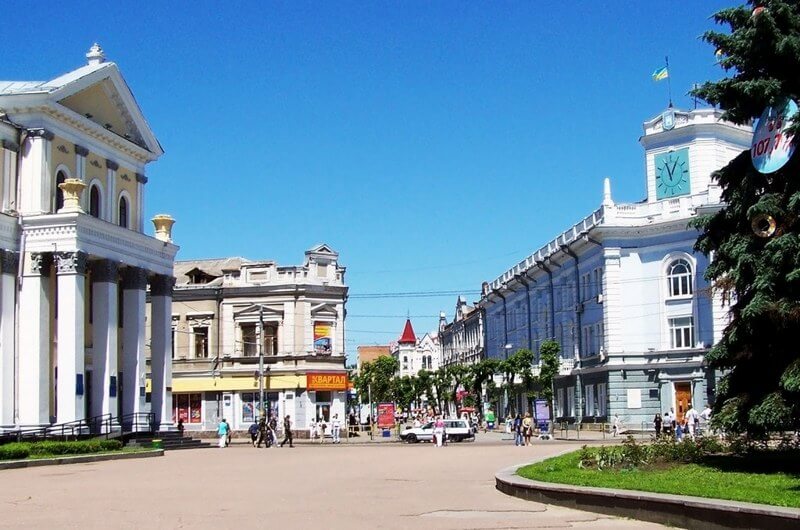 Zhytomyr is a regional city located on the Teteriv River (140 km from Kyiv) and one of the oldest cities of the Kyivan Rus period. The date of the founding of the city is 884, and the first chronicle mention occurs in 1321 under the name of Zhytomel. The city can boast not only with its rich ancient history. Such great people as academician S.Korolyov, writer Haim-Nahman Byalik, pianist S.Richter, etc. were born here. A cozy green city always attracted the attention of tourists.
Zhytomyr is a regional city located on the Teteriv River (140 km from Kyiv) and one of the oldest cities of the Kyivan Rus period. The date of the founding of the city is 884, and the first chronicle mention occurs in 1321 under the name of Zhytomel. The city can boast not only with its rich ancient history. Such great people as academician S.Korolyov, writer Haim-Nahman Byalik, pianist S.Richter, etc. were born here. A cozy green city always attracted the attention of tourists.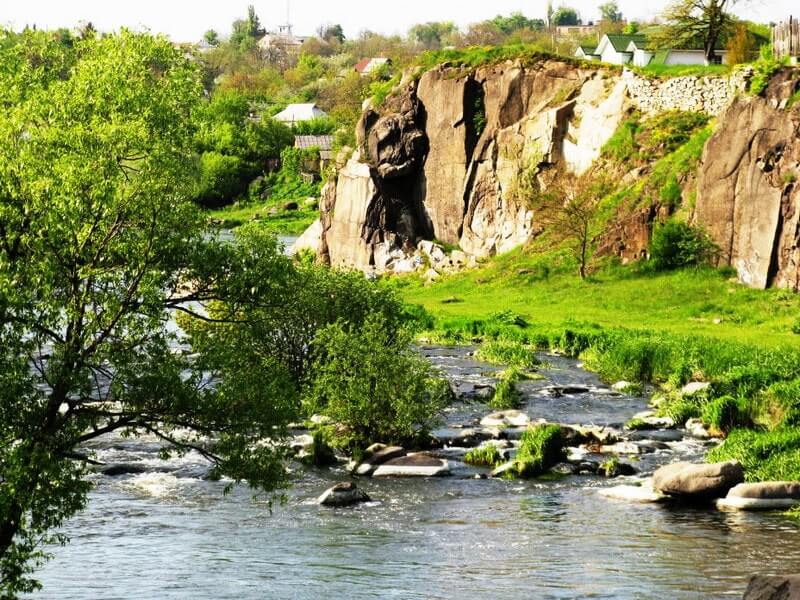 Bohuslav. Bohuslavsky granite outcrop is a small regional town in 120 km from Kyiv, located on the rocky banks of the river Ros. It was founded in 1032 by Prince of Kyiv Yaroslav the Wise, although the first mention occurs in 1195 in the annals as a fortress of the Poros line of Bohuslavl, built to protect the southern outskirts of Kyivan Rus. Throughout its history, the city was part of the Grand Duchy of Lithuania, the Polish-Lithuanian Commonwealth, Poland, and from 1796 became the centre of the Bohuslavsky county of the Kyiv province.
Bohuslav. Bohuslavsky granite outcrop is a small regional town in 120 km from Kyiv, located on the rocky banks of the river Ros. It was founded in 1032 by Prince of Kyiv Yaroslav the Wise, although the first mention occurs in 1195 in the annals as a fortress of the Poros line of Bohuslavl, built to protect the southern outskirts of Kyivan Rus. Throughout its history, the city was part of the Grand Duchy of Lithuania, the Polish-Lithuanian Commonwealth, Poland, and from 1796 became the centre of the Bohuslavsky county of the Kyiv province. Pereyaslav. The Museum of Folk Architecture and Life of the Middle Dnieper – is the ancient city of Kyivan Rus, called Pereyaslavl, which means “took over the glory.” The city was first mentioned in 907, becoming from the XI century the capital of the Pereyaslavl principality. In 1943 the city was renamed Pereyaslav-Khmelnitsky. Current name the city bears since 2019 and is part of the Kyiv region (90 km from Kyiv). In due time there lived Taras Shevchenko, Hryhorii Skovoroda, Sholom-Aleikhem, etc. Pereyaslav entices tourists not only with ancient history.
Pereyaslav. The Museum of Folk Architecture and Life of the Middle Dnieper – is the ancient city of Kyivan Rus, called Pereyaslavl, which means “took over the glory.” The city was first mentioned in 907, becoming from the XI century the capital of the Pereyaslavl principality. In 1943 the city was renamed Pereyaslav-Khmelnitsky. Current name the city bears since 2019 and is part of the Kyiv region (90 km from Kyiv). In due time there lived Taras Shevchenko, Hryhorii Skovoroda, Sholom-Aleikhem, etc. Pereyaslav entices tourists not only with ancient history.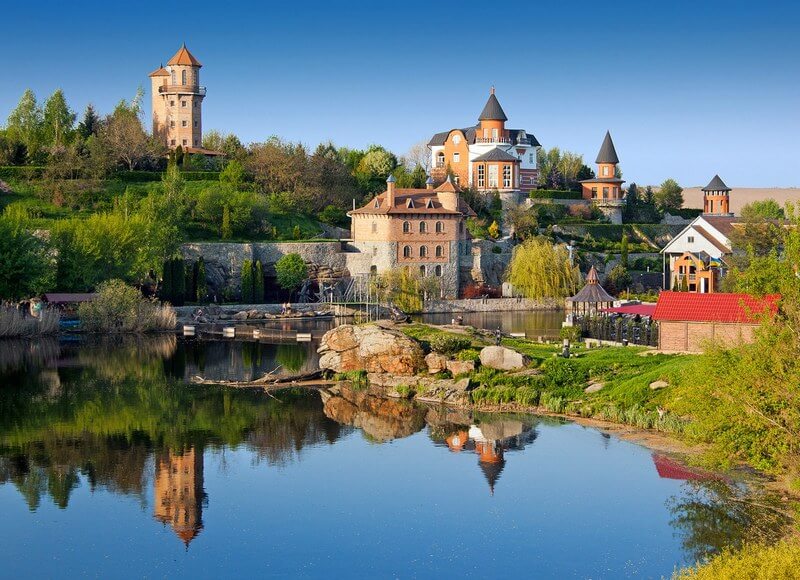 The landscape park in the village of Buky – is a small village in the Kyiv region (115 km from Kyiv), which became famous due to the landscape park founded here in 1996. The park was created on the initiative and on the funds of businessman I.Suslov. The park is interesting due to its unusual design: sculptures, fountains, arbours, a church with a chapel, and even a mini-zoo where live bear cubs, deer, ponies, etc.
The landscape park in the village of Buky – is a small village in the Kyiv region (115 km from Kyiv), which became famous due to the landscape park founded here in 1996. The park was created on the initiative and on the funds of businessman I.Suslov. The park is interesting due to its unusual design: sculptures, fountains, arbours, a church with a chapel, and even a mini-zoo where live bear cubs, deer, ponies, etc. Bila Tserkva – is a city in 90 km from Kyiv, founded by Yaroslav the Wise as a fortress for protection from nomads. The main attraction of the city is the arboretum “Alexandria” – a landscape park arrangement of plants, architectural structures, sculptures and ponds. It is one of the largest parks in Eastern Europe. The park was founded in the late 18th century by Alexandra Engelhardt, wife of the Polish hetman Franciszek Branicki and the niece of Prince Potemkin, and named after her. The author of the development plan is the French architect Myuffo. Trees from Europe and the world were brought here to equip the park.
Bila Tserkva – is a city in 90 km from Kyiv, founded by Yaroslav the Wise as a fortress for protection from nomads. The main attraction of the city is the arboretum “Alexandria” – a landscape park arrangement of plants, architectural structures, sculptures and ponds. It is one of the largest parks in Eastern Europe. The park was founded in the late 18th century by Alexandra Engelhardt, wife of the Polish hetman Franciszek Branicki and the niece of Prince Potemkin, and named after her. The author of the development plan is the French architect Myuffo. Trees from Europe and the world were brought here to equip the park.